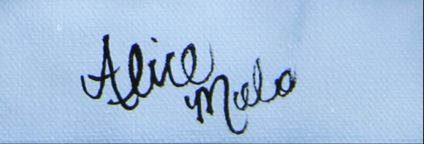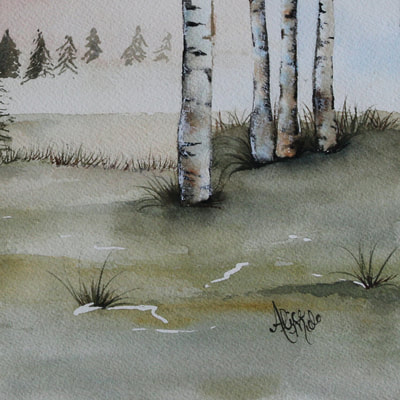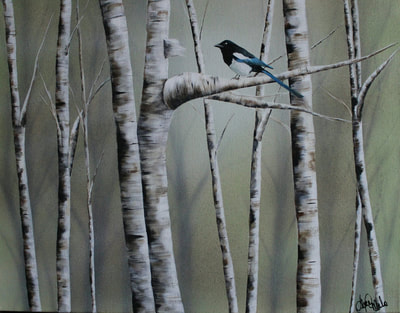|
I had one of my art students in my art class ask me if they should sign their art work, and l thought this would be a good opportunity to blog about it. Signing your art is an essential part of the creative process. The moment you apply your name to a piece of your art, you declare it to be officially done and ready to go public. No matter what your signature looks like, what form it takes or where you put it, in my opinion no work of art is complete without one. I don’t know many of my artist friends who don’t sign their work although l am sure there are some out there who don’t. l myself have some guidelines l follow when signing my work, l thought l would share them with you. Do you want to jeopardize your art's future simply because you don't sign your art or you sign your name in such a way that people have difficulty reading it? I doubt it I have an autograph that l use that is not to eye-catching as l don’t want it to distract from my artwork, it is simple and very legible, my signature is the same no matter what art work l do. Keeping your autograph consistent for paintings, drawings or prints is important so that others will eventually come to recognize and identify your style. I tend to sign my work right after l paint it. While the paint is still wet l sign my name on the bottom right corner of my paintings, or where ever you’d prefer to sign. This will ensure the tones are evenly matched with your painting, thus your signature is not going to stand out to much. This is just my own personal opinion and l am aware that other artists have different views. I use the same medium on my paintings when signing my name. If l do a drawing l usually sign my name with a micron fine marker, but some artists will always use the same medium to sign, l think it’s all about preference. Don't sign on top of a varnished painting because the signature will look like it was added later or more as an afterthought than a statement. Signatures like that are more prone to being questioned. Varnishing is a finishing process to a painting that should be done after a painting has been signed. If you choose to use your initials, it is important to include your full signature on the back of your artwork, this way your work is identified. Choosing a signature that people can actually read is always easier to remember, so signing your artwork just makes sense. Art buyers, critics and the general public will eventually come to recognize you and your art by just viewing your signature. Date your art. You may not think this is important now, but after you've been making art for several decades, you'll understand why. If you don't want to date your art on the front, date it inconspicuously on the back or even on the edge. Obviously, dating your art minimizes any guesswork as to when something was completed. The better known you become, the more important dates are for anyone interested in your evolution as an artist and that includes the curators. Have Beautiful Day,
Alice Melo
2 Comments
|
AuthorAlice is a realistic full time visual artist with over 25 years of experience in her art career. Passionate about helping others grow in their creative process. Alice shares invaluable tips and strategies on her blog to help readers improve their art practice. When not in her studio, Alice enjoys teaching and cooking. Connect with Alice on Instagram, Facebook or visit her website at www.alicemelofineart.com Archives
July 2024
Categories |




 RSS Feed
RSS Feed